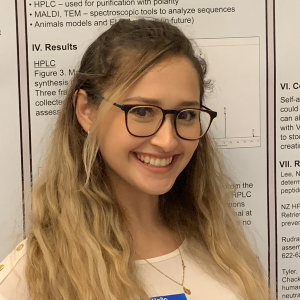Pilot Project, Year 3
Multivalent Display of HPV Antigens using Self-Assembling Peptides
Since the introduction of the first HPV vaccine in 2006, the prevalence of certain HPV types declined among women from the general population aged 14-24 years. The currently available HPV vaccine (Gardasil® 9) was developed using virus-like particles (VLPs). It prevents against nine of the over 150 HPV types; two that cause warts (types 6, 11) and seven that can cause cancer (types 16, 18, 31, 33, 45, 52, and 58). While effective, the HPV vaccine has certain limitations.
For example, they require extensive purification protocols, two doses, and refrigeration. Therefore, research efforts continue to strive toward finding next-generation vaccines that have strong immunogenicity and are cost-effective.
Recently, short synthetic self-assembled peptides showed promise as a vaccine platform. These peptides, similar to VLPs, spontaneously assemble into stable ordered amyloid-like fibrils. Unlike VLPs, the fibrils are extremely robust at varying temperatures, pH, and solvents. The self-assembled fibrils are also significantly larger than the small spherical VLPs. Thus, the fibrils allow for potential increased immunogenicity and cost-effectiveness.
We hypothesized that self-assembled fibrils displaying HPV antigens produce strong immune responses due to the geometrical and multivalent display of peptide antigens along the fibril.
To test this hypothesis, we synthesized previously identified HPV antigens that will be chemically conjugated to the self-assembling peptides fibrils. Immune responses were assessed using a common murine model. Potential vaccine candidates will be further assessed via an HPV challenge model in mice.
Funding: The study is funded by NIMHD/NIH U54MD012388



